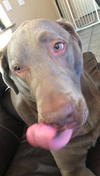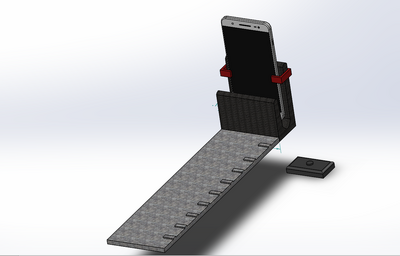BME100 s2018:Group7 W0800 L6
| Home People Lab Write-Up 1 | Lab Write-Up 2 | Lab Write-Up 3 Lab Write-Up 4 | Lab Write-Up 5 | Lab Write-Up 6 Course Logistics For Instructors Photos Wiki Editing Help | ||||
OUR COMPANY
Our Brand Name LAB 6 WRITE-UPBayesian StatisticsOverview of the Original Diagnosis System BME 100 tested patients for the disease-associated SNP by first dividing app all the work. The class was split up into 11 teams of 6. Since there was 22 patients, each team received the DNA of two patients. Each team would individually conduct the PCR and thus have their own positive and negative controls. This helped prevent error because each of the controls was individualized to how they conducted the PCR. Depending on what phone a person has and how the experiment was set up, their photos could be slightly different. Therefore, because each individual uses the ImageJ calibration controls to calibrate everything, the differences between lab groups don't matter. Furthermore there were 3 replicates per patient and three photos were taken for each which further prevented error. By having a lot of data, in this case photos, the data will be more accurate. After everyone conducted the PCR and analyzed all their images, everyone's data was collected on an excel sheet. There was no data for Group 9, most likely because they didn't submit their data. There were a total of 5 positive conclusions and out of those, only 3 were correct which means they were successful. There was a total of 14 negative conclusions and 12 of them were correct. Additionally, one of the tests from Group 7 was found to be inconclusive.
What Bayes Statistics Imply about This Diagnostic Approach
Intro to Computer-Aided Design3D Modeling
In our design, there is an adjustable stand which holds the phone and allows you to move it accordingly to make it stable and perfectly inline with the slide. It also includes a bluetooth compatible button that will take pictures from outside of the box. We chose to design the fluorimeter this way because it addresses the major problems of the original design. It removes the problem of having to raise the stand with random objects to get it close to the right height to take photos. There is no longer a need to measure the distance of the phone from the fluorimeter because the stand has a ruler on the side and is stable so it won't move during the procedure. The bluetooth button is more efficient that the original design because it allows the user to take multiple pictures at once without having to go inside of the box and risk moving a portion of the apparatus, which would disrupt the accuracy of the data. Overall, our design is much more user-friendly and reliable than the original design because it removes the major weaknesses that it had.
Feature 1: ConsumablesIn our package, consumables that will be included are: PCR mix, primer solution, SYBR Green solution, buffer, and glass slides. The user will have to provide their own micropipette, pipette tips, and plastic tubes (which will most likely be available to them already if they are conducting this experiment in a lab or academic setting). Feature 2: Hardware - PCR Machine & FluorimeterIn our design, the PCR machine will be excluded, assuming that the user has already performed the experiment and just needs the fluorimeter to see if their experiment was successful and to get data from it. In other words, our packaging will include the consumables listed above, and the fluorimeter machine with the stand attached and box to cover the system when taking pictures. One of the major weaknesses of the fluorimeter was that the stand for the phone was very hard to use, it had to be raised with random objects underneath and was difficult to get the phone stable for the pictures to be taken at the same angle each time. Another major weakness in the design was having to use a timer to take the photos and open the box between each picture when going to take a new one (very time consuming and could effect the position of the phone and the data retrieved). In our design, we have attached the phone stand to the fluorimeter to make it more sturdy. The phone stand will be adjustable forward and backwards (towards the fluorimeter) and also up and down to be compatible with any size phone (this will allow the phone camera to be lined up perfectly with the droplet on the slide). The new design component involved with the picture-taking portion of the problem assessment will connect your phone to a hand-held button outside of the box via bluetooth, this will remove the problem of having to use a timer to take photos and risking moving the angle of the phone when tapping the picture button. This will allow the user to take all three photos within seconds and ensure the phone angle was the same each time, making the overall data more reliable in the end. Overall, our design will make the use of the fluorimeter much easier and more accurate, which will positively effect the reliability of the data.
| ||||



